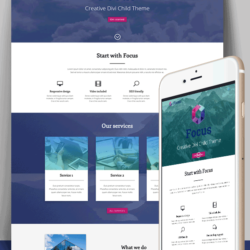For many designers and developers, the client who is completely new to digital marketing can be a frustrating one. Endless explanations of the most basic concepts, dealing with sticker shock, helping them work with third party providers; frankly, it’s all overhead and hassle that you’d be free from when working with more sophisticated clients.

The Why
So why should your agency even engage with this kind of client? And if you do decide to work with them, how should you go about that? When it comes to deciding which clients to take and which to pass on, that’s a strategic business decision (and one that becomes scarily tactical when business is scarce). Starting off, there are three great reasons to take on “newbie” clients:
- MARKET: The size of the business opportunity
- POTENTIAL: The chance to create a long-term client relationship
- ALTRUISM: The chance to ‘move the needle’ for small businesses
Each bears discussing individually, after all: you’re probably not convinced yet that this is business you want.
 The market opportunity
The market opportunity
According to the United States Census, there are more than 4M small businesses in this country with 20 or fewer employees, only slightly over 50% have any website at all. Conservatively that puts the market size at north of 1.5M, certainly worth considering in your agency’s marketing calculus. Remember, these are only small businesses without any website. There are many, many more that made a foray into digital marketing years ago and haven’t moved forward since them. Those are the folks with a text-heavy site done on Frontpage 15 years ago. You know the type. Those businesses are opportunities too. The potential is truly huge. LEARN MORE: Frequently asked questions about the size of the small business market
Potential for long-term revenue
Agencies—whether they specialize in digital marketing or they sell insurance—live and die on recurring revenue and long-term client relationships. In the digital world, subscriptions for site support, social media posting, or blog content can pave over the bumpy spots in the revenue road between development contracts. Put more succinctly: this kind of revenue is what will keep your firm afloat in tough times. These are exactly the type of prospects that can become long-term clients for SEO, social media, blogging, and site support/update services if you handle them properly. More about that later. Remember, these clients are not familiar with dozens digital marketing providers: you have the opportunity to be their “go-to” person for everything digital for years to come.
Doing the Right Thing
Some would say that altruism has no place in business. I would dispute that, conveniently pointing to increased emphasis on corporate social responsibility and the establishment of public-benefit corporations as clear signs that it not only exists, it is flourishing. In fact, no less an authority than Forbes thinks so. LEARN MORE: Is Altruism Good Business? Bringing small businesses into the digital world may not save humanity, but it may indeed save tens of thousands of companies from untimely extinction. Besides, in my experience, small business owners tend to be very grateful to whoever brings their firm into the 21st century and they can be some of the best and longest business relationships you have.
The How
OK, you say, these are good reasons, but you want to know how to actually work with these clients. And really, that’s a great question. Quite frankly, these clients are different than most you probably work with. That will dictate a different approach in everything from selling to project management.
Selling to clients who are unfamiliar with digital marketing
Before you worry about managing clients like these, you have to get the business in the first place. We know (or should know) that selling our services is all about understanding client needs, explaining our offerings, and aligning those offerings to specific benefits to the client’s business. But doing that for clients unfamiliar with digital marketing takes a bit more effort than for other prospects—especially the explaining part. But that’s not where you’re going to start anyway. You’re going to start by truly understanding your client’s business.
Understanding the client’s business
You can’t just start selling. Instead, invest some time in learning about the client’s business: their product/service, their market, their competitors, and so on. Once you have this information, I recommend you use a technique called ‘need satisfaction selling’ to close the business (link following). LEARN MORE: Need satisfaction selling You may find that you have to help the client craft their value proposition and messaging too. (See that as an opportunity). All too often, small business owners are too busy trying to keep the doors open to think much about things like that. Work with the business to find out what makes them unique and valuable to their customers and you have the beginnings of messaging. Here are two links that should help. LEARN MORE: Being unique LEARN MORE: Understanding your value proposition
Aligning with needs
You’ll never be successful selling to these clients if you’ve not uncovered their needs. Once you’ve done that, it’s critical to align your offerings with their needs. We hope you followed the link that explains need satisfaction selling, that’s what you have to do here:
- Clearly understand the client needs
- Propose services that meet those needs
- Explain how your services do that
If you’re thinking that last one is the tough one…you’re right.
Explaining technical concepts to non-technical clients
Eventually, to sell clients who are unfamiliar with digital marketing, you’ll have to find a way to convey the benefits of some very, very technical things in terms they will understand. If you do not, you will probably not get the business. Most businesspeople will not spend money on anything they do not see a clear benefit from. My favorite way of doing this is by analogy. These people are successful in business, so they have a good basic understanding of business concepts; you simply need to relate what they already know to digital marketing. Here are two great examples.
The website
I like to describe a website as a store that’s open 24/7/365—this is true whether the site actually sells product or not. Prospects can visit whenever they want. They can find out what products/services are offered, what their specifications are, recommended uses. They can learn about the business, look at testimonials from satisfied customers, find out the operating hours and location. In other words, they can do pretty much whatever they want, anytime they want to. No store offers that. Period.
Everyone remembers direct mail. Simply relate email marketing to direct mail when discussing response rates, building lists, and so on. Of course, there are laws related to spam and opt-ins; but once your client understands the concept, those are easy. For more reading, here’s some great information from Lifehacker: LEARN MORE: How to Explain Complex Ideas (Like Tech) to Those Who Don’t Understand
Managing projects with this kind of client
Project management is a skill all by itself; you know that from experience. And it’s a skill that I don’t consider myself particularly adept at. But what I do know is how to do this with small business clients: communicate, communicate, and then communicate. Put everything in writing, carefully explain what every deliverable is, what you need from the client to complete your tasks, and when you need it to stay on schedule. Regularly remind clients of upcoming deliverables. That does two things: first it gives the client a critical reminder; and second, it can give you advance warning if things are beginning to slip. These are not clients to put a Pert or Gantt chart in front of. In fact, they may not monitor email nearly as often as we “denizens of the digital world” do. And many of them do not have access to their email outside of work. Instead of being shocked at their lack of connectivity, get a phone number—better yet, several. And call if you need to, but always follow up any commitments or schedule changes that were agreed to with written confirmation. (I wanted to bring up one subject that I haven’t mentioned yet, perhaps to your surprise: payment. In my entire time working with these types of clients, I have only had one payment issue. That said, my invoice terms are “due upon receipt” and clearly outline that additional charges will apply if not paid in a timely manner. I just wanted to reassure you that this is not the problem that you may have imagined it to be.)
and when you need it to stay on schedule. Regularly remind clients of upcoming deliverables. That does two things: first it gives the client a critical reminder; and second, it can give you advance warning if things are beginning to slip. These are not clients to put a Pert or Gantt chart in front of. In fact, they may not monitor email nearly as often as we “denizens of the digital world” do. And many of them do not have access to their email outside of work. Instead of being shocked at their lack of connectivity, get a phone number—better yet, several. And call if you need to, but always follow up any commitments or schedule changes that were agreed to with written confirmation. (I wanted to bring up one subject that I haven’t mentioned yet, perhaps to your surprise: payment. In my entire time working with these types of clients, I have only had one payment issue. That said, my invoice terms are “due upon receipt” and clearly outline that additional charges will apply if not paid in a timely manner. I just wanted to reassure you that this is not the problem that you may have imagined it to be.)
In a Nutshell
When you have a small digital agency, you don’t have the luxury of ignoring potential business. Yet, I suggest that many agencies do. Particularly smaller clients, those with no existing digital presence, are often looked at as just too difficult to deal with. I would tell you that they are not without frustration, but nothing in business is. Still, viewed through the lens of opportunity, this market is huge and very underserved. If your agency truly makes an effort to engage these prospects, it will be one of the best decisions the firm has ever made.


 The market opportunity
The market opportunity


